What Month Do You Start Feeding Pond Fish?
Are your pond fish hungry after winter? Knowing when to feed them is key. Incorrect timing can harm your fish and pond.
Start feeding your pond fish when water temperatures consistently stay above 10°C (50°F). This usually happens in spring. Fish metabolism slows in cold water, so feeding too early is wasteful and pollutes the water.
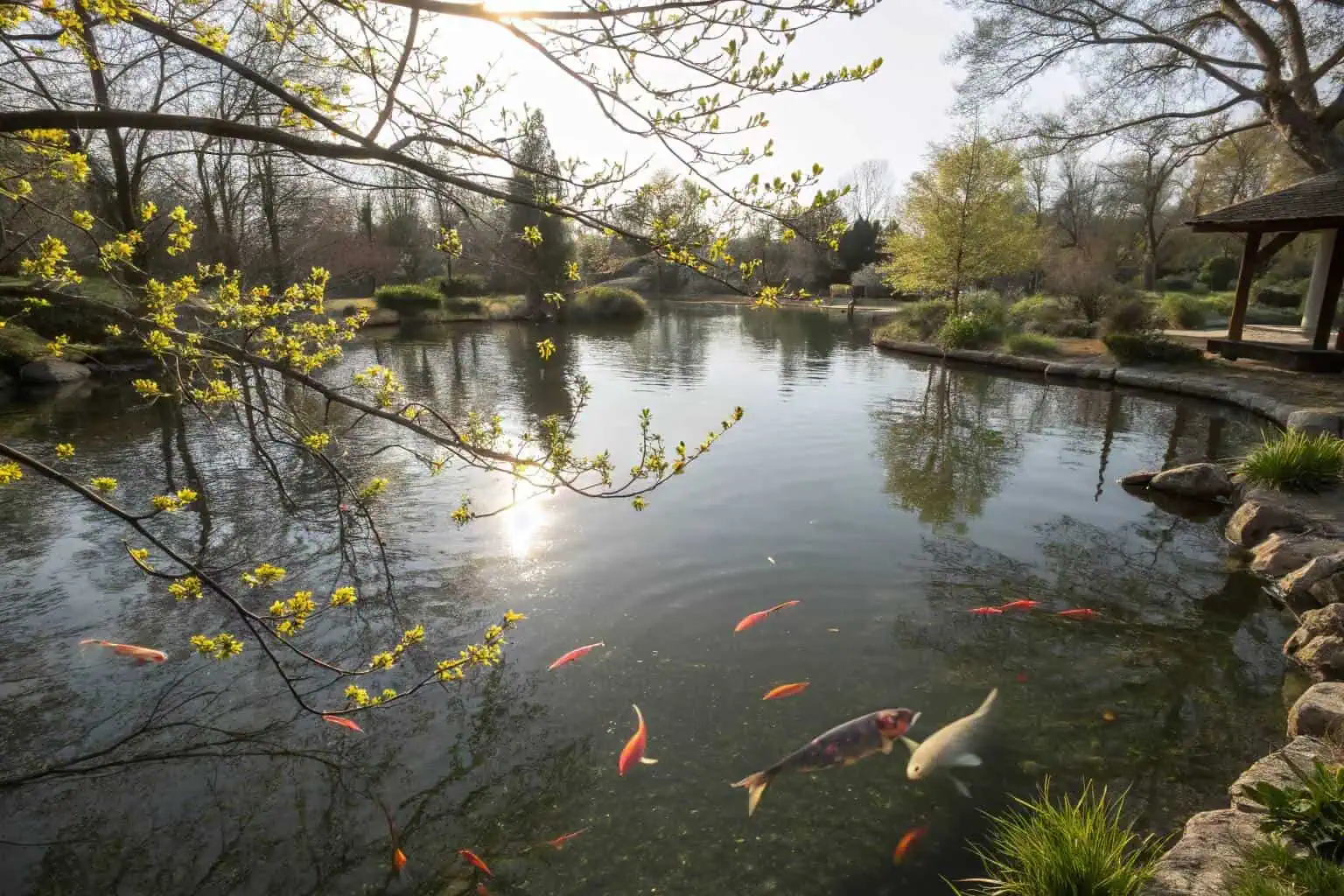
As a pond enthusiast myself, I've learned that timing is everything. It's not just about tossing food in; it's about understanding your fish's needs as the seasons change. Let's explore this further to keep your aquatic friends happy and healthy.
When should I start feeding fish in the pond?
Wondering about the right time to resume feeding your pond fish? It's a common question, and getting it right sets the stage for a healthy season.
You should start feeding your fish when the pond water consistently stays above 10°C (50°F). Fish are cold-blooded, and their digestion slows down in colder water. Feeding them too early can lead to undigested food, which pollutes the pond.
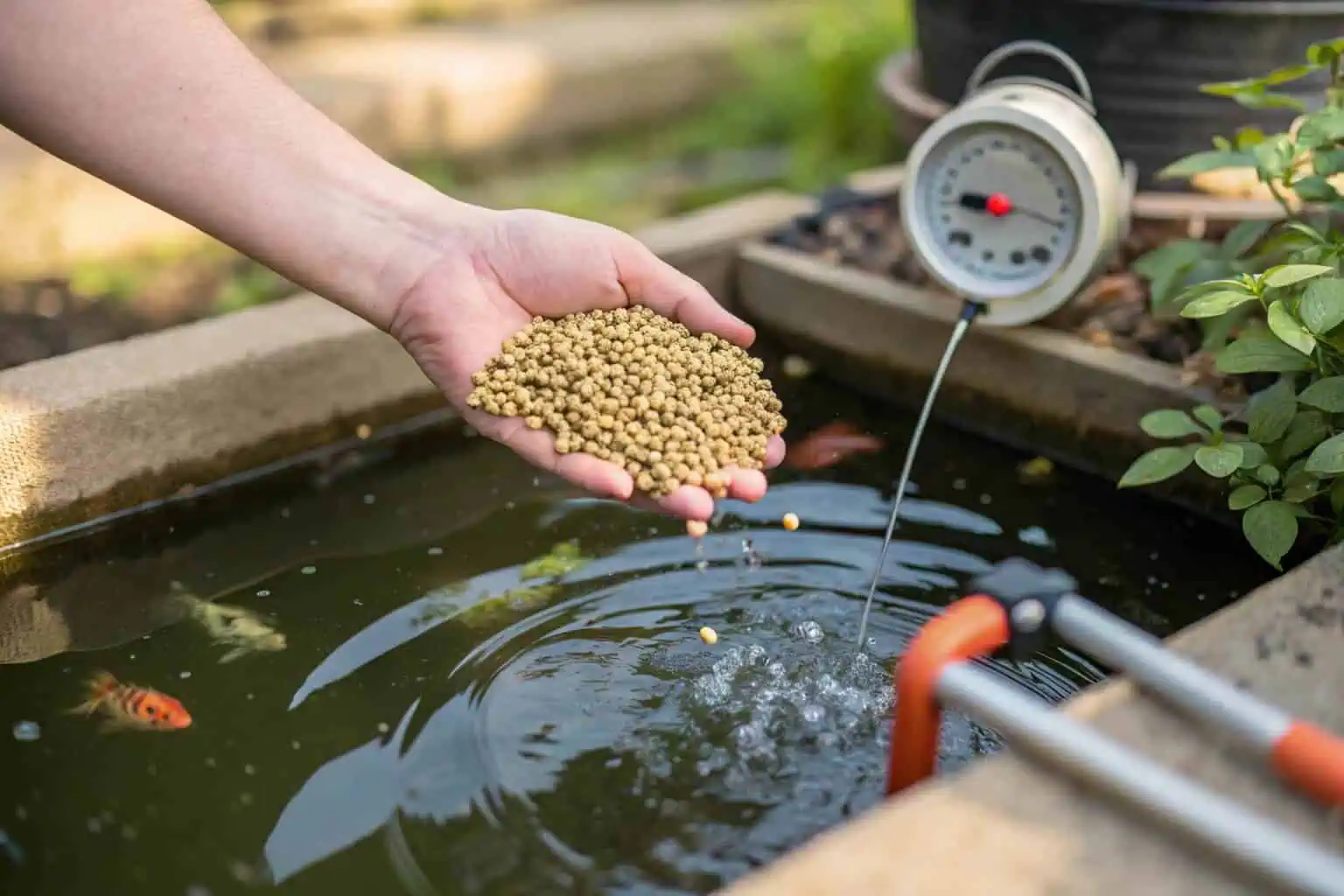
I remember one early spring, eager to see my koi active, I started feeding them when the water was still a bit too chilly. The uneaten food quickly clouded the water in my Bancy fish pond1, and I had to do an extra water change. That experience taught me patience and the importance of a good thermometer. It’s crucial to monitor the water temperature, not just the air temperature. This simple step ensures your fish can properly digest their food and helps maintain good water quality. For those of us using reliable systems like Bancy's customizable fish tanks2, maintaining that quality is even easier, but nature's cues are paramount.
Understanding Fish Metabolism
Fish are ectothermic, meaning their body temperature and metabolic rate are governed by the surrounding water temperature. In cold water, their metabolism slows significantly. They require less energy and their digestive systems become less efficient. If you feed them during this period, the food may not be properly digested. This undigested food can ferment in their gut, leading to health problems, or be excreted largely intact, contributing to water pollution. As the water warms up, their metabolism3 increases, and so does their appetite and ability to process food. This is why waiting for that consistent 10°C (50°F) mark is so important.
Observing Fish Behavior
Beyond just temperature, observe your fish. Are they becoming more active? Are they coming to the surface, seemingly looking for food? These are good indicators that their metabolism is picking up and they might be ready for small, easily digestible meals4. In my early days, I relied heavily on my Bancy pond's clear views to watch my fish. If they are still lethargic and staying near the bottom, it's likely too soon, even if the temperature is borderline. Remember, it's always better to wait a little longer than to start feeding too early.
Choosing the Right First Food
When you do start feeding, begin with a low-protein, easily digestible food5, like a wheat-germ-based pellet. These are gentler on their slowly awakening digestive systems. Offer small amounts initially, only what they can consume in a few minutes. Gradually increase the quantity and transition to higher protein foods as the water continues to warm and their activity levels increase. This careful approach helps prevent digestive upset and keeps your pond environment clean.
| Water Temperature | Feeding Action | Food Type Recommendation |
|---|---|---|
| Below 10°C (50°F) | Do not feed | None |
| 10-15°C (50-59°F) | Feed sparingly, once every 1-2 days | Wheat-germ based, low protein |
| Above 15°C (59°F) | Gradually increase feeding frequency and amount | Regular, high-quality pellets |
What is the best feeding schedule for fish?
Is there a perfect daily routine for feeding your fish? Establishing a consistent schedule benefits both your fish and your pond's ecosystem.
The best feeding schedule involves feeding small amounts 1-3 times a day during warmer months, only what fish consume in 5 minutes. Avoid overfeeding, as uneaten food decays, harming water quality. Consistency in timing helps fish learn and reduces stress.
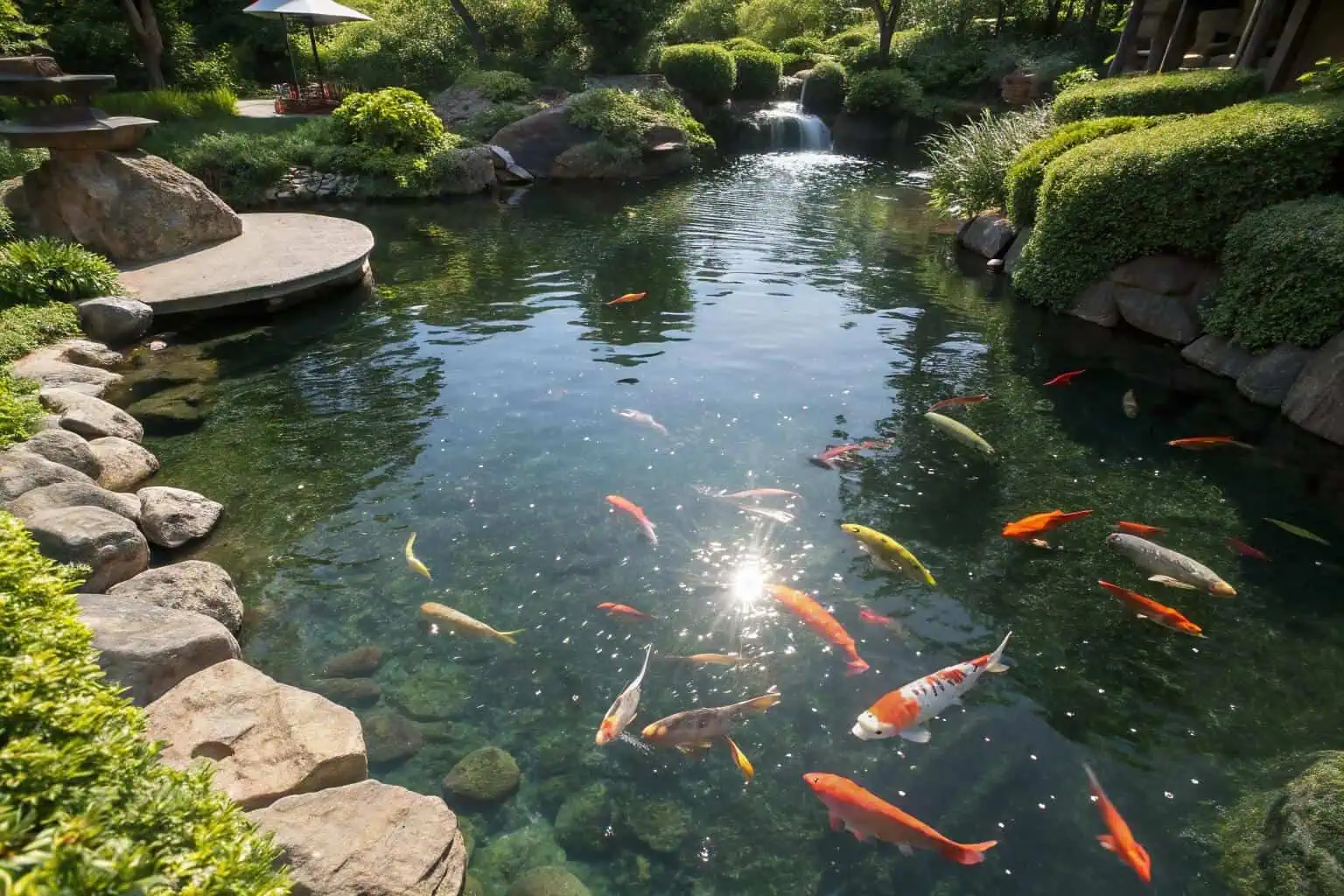
I've found that my fish, especially the koi in my large Bancy galvanized pipe fish tank, thrive on a predictable schedule. They learn when to expect food and gather eagerly. This not only makes feeding time6 enjoyable to watch but also ensures all fish get a chance to eat. Using an automatic feeder can be a great help, especially if you have a busy schedule. It dispenses precise amounts at set times, which is fantastic for maintaining consistency and preventing the common mistake of overfeeding. Remember, a well-fed fish is a happy fish, and a clean pond is a healthy pond.
Factors Influencing Feeding Frequency
Several factors determine how often you should feed your fish. Water temperature is primary; warmer water means higher metabolism and more frequent, smaller meals. Fish species also matters; some are naturally more voracious than others. The size and age of your fish play a role too, with younger, growing fish often needing more frequent feeding than mature ones. Finally, the type of food you're providing can influence frequency. Highly nutritious, dense foods7 might be fed less often than lighter, bulkier options. I always advise my clients to observe their fish – they are the best indicators of their needs.
The "Five-Minute Rule"
A golden rule in fish feeding is the "five-minute rule8." This means you should only offer as much food as your fish can completely consume within about five minutes. If there's food left floating or sinking after this time, you've fed them too much. Scoop out any excess to prevent it from decomposing and fouling the water. This rule is especially important in densely stocked ponds or systems like Bancy's aquaculture tanks where maintaining optimal water quality is key for healthy growth. It takes a bit of practice to get the amount just right, but it's a crucial skill for any pond keeper.
Seasonal Adjustments
Your feeding schedule9 isn't static; it needs to adapt to the seasons.
- Spring: As water warms above 10°C (50°F), start with small, easily digestible meals once a day or every other day. Gradually increase as temperatures rise.
- Summer: This is peak feeding time. With warm water (ideally 20-25°C or 68-77°F for many pond fish), fish are most active and growing. Feed 2-3 times daily with high-quality food10.
- Autumn: As water cools below 15°C (59°F), reduce feeding frequency and switch back to easily digestible, lower-protein foods. Stop feeding when temperatures consistently drop below 10°C (50°F).
- Winter: Generally, no feeding is required when water is below 10°C (50°F). Fish enter a state of torpor, and their digestive systems nearly shut down.
| Season | Water Temperature Guide | Feeding Frequency | Notes |
|---|---|---|---|
| Spring | 10-18°C (50-65°F) | 1-2 times daily, lightly | Start slow, use wheat-germ based food |
| Summer | 18-25°C+ (65-77°F+) | 2-3 times daily | Peak growth, high-quality protein food |
| Autumn | 18-10°C (65-50°F) | Gradually reduce to 1 time daily, then stop | Switch back to wheat-germ, monitor temp |
| Winter | Below 10°C (50°F) | Do not feed | Fish are dormant |
When should I fertilize my fish pond?
Thinking about giving your pond a nutrient boost? Fertilizing can be beneficial, but timing and method are crucial for success, not problems.
Fertilize your fish pond in spring and summer when water temperatures are between 15-30°C (60-86°F). This promotes phytoplankton growth, the base of the food web, providing natural food for fish. Avoid over-fertilizing to prevent algae blooms.
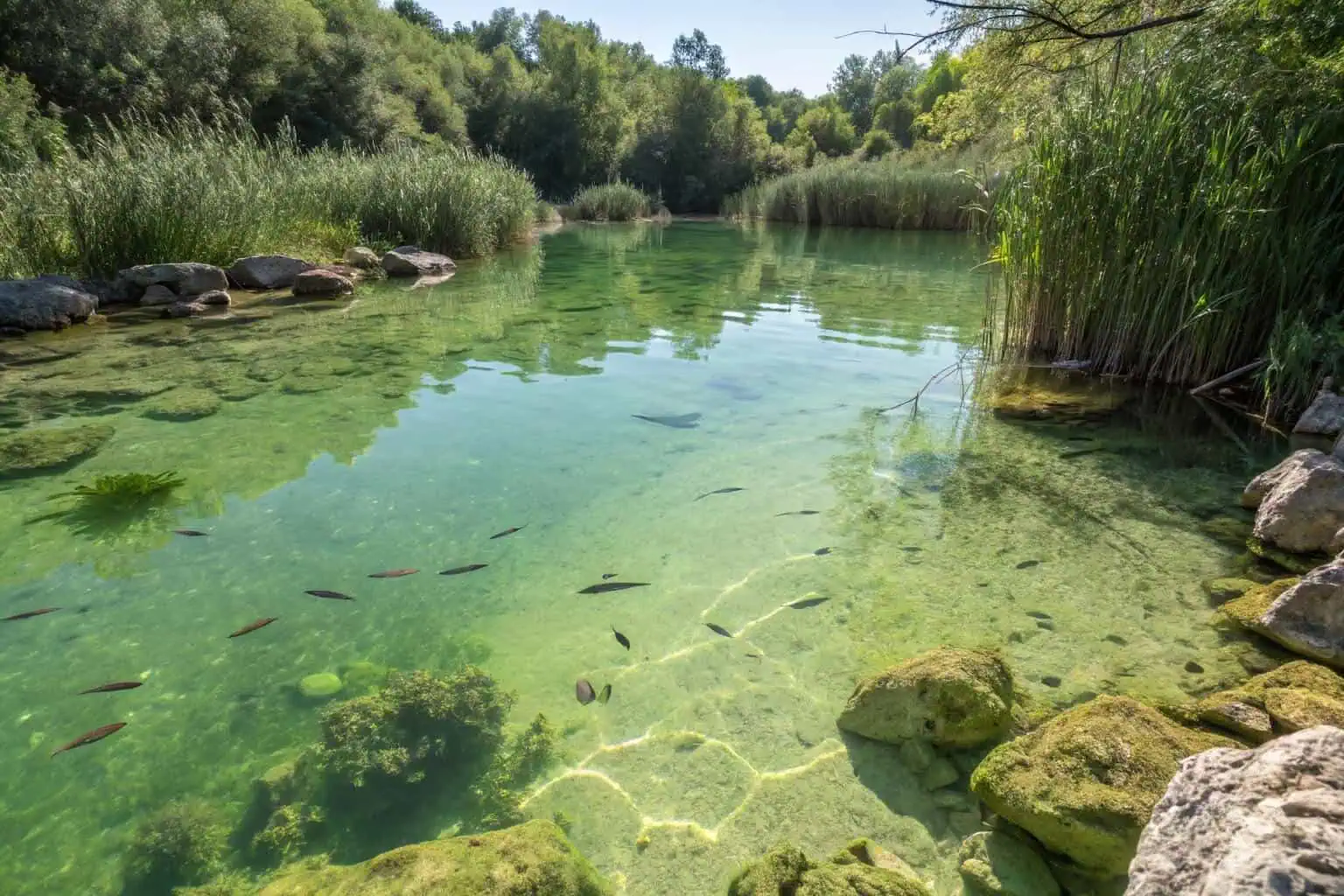
In my experience managing various pond setups, including the versatile Bancy collapsible plastic fish tanks11 which are great for controlled environments, I've seen firsthand how proper fertilization can enhance natural productivity. However, I've also seen the negative effects of overdoing it. One client, enthusiastic but inexperienced, heavily fertilized their new pond, hoping for rapid fish growth. Instead, they got a massive algae bloom that depleted oxygen and stressed the fish. This taught me to always emphasize starting with small, incremental doses and closely monitoring water clarity and quality. The goal is a healthy green tint, not pea soup!
Why Fertilize a Fish Pond?
The primary purpose of fertilizing a fish pond is to stimulate the growth of phytoplankton (microscopic algae). Phytoplankton are the foundation of the aquatic food web. They are consumed by zooplankton (tiny aquatic animals), which in turn are eaten by insects and small fish. Larger fish then feed on these smaller organisms. By increasing phytoplankton12, you effectively increase the natural food available in the pond, which can lead to faster fish growth and a healthier pond ecosystem. This is particularly relevant in ponds managed for fish production, but even in ornamental ponds, a healthy plankton bloom can supplement commercial feeds and improve water quality by consuming excess nutrients.
The Right Conditions for Fertilization
Successful pond fertilization depends on several factors:
- Water Temperature13: Phytoplankton respond best to fertilization when water temperatures are consistently above 15°C (60°F). Fertilizing in colder water is often ineffective.
- Sunlight: Phytoplankton need sunlight for photosynthesis. Ponds that are heavily shaded may not respond well to fertilization.
- Water Alkalinity and Hardness14: Water should have adequate alkalinity (at least 20 ppm) for fertilizer to be effective and to buffer against pH swings. If alkalinity is low, liming the pond may be necessary before starting a fertilization program.
- Water Exchange15: Ponds with high rates of water exchange (e.g., spring-fed ponds with significant outflow) are difficult to fertilize effectively, as the added nutrients are quickly flushed out.
How to Fertilize Safely
Start with a conservative approach. Use a pond fertilizer16 specifically formulated for aquatic environments. A common method is to apply fertilizer until a light green phytoplankton bloom is established, typically where you can see your hand or a white object (like a Secchi disk) about 18-24 inches below the surface.
- Initial Application: Begin in spring when water temperatures are right.
- Monitor: Check water clarity17 after 7-10 days.
- Re-application: If the water is not green enough (visibility greater than 24 inches), apply another dose. If visibility is less than 18 inches, the bloom is too dense; do not add more fertilizer and consider a partial water exchange if oxygen levels are a concern.
- Maintenance: Once a good bloom is established, re-apply fertilizer as needed to maintain it, typically every 2-4 weeks during the growing season.
Always follow product instructions carefully. Over-fertilization is a common mistake that can lead to excessive algae growth, oxygen depletion (especially at night or on cloudy days), and even fish kills.
| Parameter | Ideal Range for Fertilization | Action if Not Ideal |
|---|---|---|
| Water Temperature | 15-30°C (60-86°F) | Delay fertilization until warmer |
| Sunlight | Good sun exposure | Fertilization may be less effective in shaded ponds |
| Alkalinity | >20 ppm | Consider liming if low |
| Water Clarity (Secchi) | 18-24 inches after bloom | Adjust fertilizer application based on visibility |
When to start feeding koi fish in the spring?
Are your beautiful koi waking up from their winter slumber? Knowing the precise moment to offer their first spring meal is key to their health.
Start feeding koi in spring when the water temperature consistently holds above 10°C (50°F), ideally reaching 12-15°C (54-59°F). Begin with small amounts of easily digestible food like wheat germ pellets. Their metabolism is still slow.
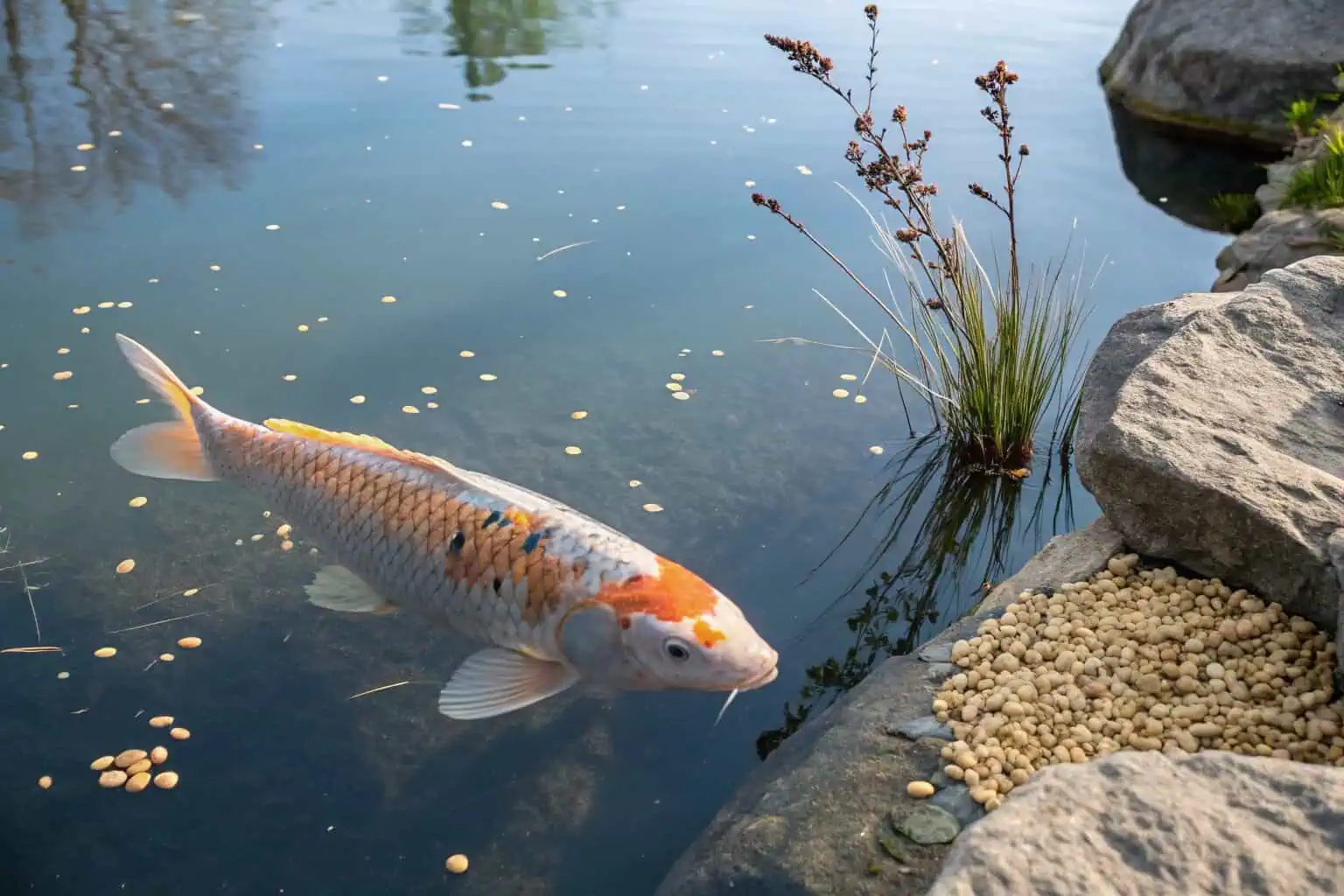
I always get excited for that first spring feeding. My koi, often housed in spacious Bancy PVC fish tanks that allow for excellent observation, start to show more activity as the water warms. It's tempting to feed them generously right away, but I've learned that a gentle reintroduction to food18 is best. Their digestive systems are like engines that have been idling all winter; they need to warm up slowly. Offering a high-quality, low-protein wheat germ food helps them transition smoothly, preventing digestive issues and keeping the water pristine.
The Critical Role of Water Temperature for Koi
Koi, like all pond fish, are cold-blooded. Their activity level and digestive capabilities are directly tied to the water temperature. In winter, when temperatures drop below 10°C (50°F), their metabolism slows dramatically19, and they enter a state of near-hibernation, relying on stored body fat. Feeding them during this time is not only wasteful but can be harmful, as undigested food can rot in their gut. As spring arrives and the water warms, their systems slowly reactivate. The 10°C (50°F) mark is a general guideline to consider light feeding, but many experienced koi keepers, myself included, prefer to wait until it's a bit warmer, around 12-15°C (54-59°F), to ensure their digestive tracts are ready.
Choosing the Right Spring Diet for Koi
The first meals of spring should be easy on your koi's system.
- Wheat Germ Pellets20: These are the go-to for early spring feeding. Wheat germ is highly digestible, even in cooler water, and provides essential nutrients without overloading their system with protein.
- Low Protein Content21: Avoid high-protein growth foods until the water is consistently warmer (above 18°C or 65°F).
- Small, Frequent Meals (Initially)22: Start by feeding a very small amount, perhaps once every other day. See how they react and if they consume it readily. As the temperature climbs and their appetite increases, you can gradually increase the frequency and amount.
- Freshness Counts: Always use fresh, high-quality koi food. Old food loses nutritional value and can become moldy.
Observing Your Koi's Behavior
Your koi will give you clues. As they become more active, swimming around the pond rather than huddling at the bottom, and perhaps nosing around the surface, they are signaling their readiness for food. If you offer a small amount and they ignore it, the water is likely still too cold, or they are not yet interested. Remove any uneaten food promptly to maintain water quality. I often tell fellow hobbyists that our Bancy ponds, with their durable liners and often customizable setups, make it easier to manage these delicate transitions by providing a stable environment.
| Water Temperature (Koi) | Feeding Action | Recommended Koi Food Type |
|---|---|---|
| Below 10°C (50°F) | Do not feed | None |
| 10-12°C (50-54°F) | Consider very light feeding if koi are active | Wheat germ (very small amounts) |
| 12-15°C (54-59°F) | Start light feeding, once daily or every other day | Wheat germ pellets |
| 15-18°C (59-65°F) | Gradually increase amount and frequency | Wheat germ / transitioning food |
| Above 18°C (65°F) | Transition to regular, higher protein summer food | High-quality staple/growth food |
Conclusion
Timing your fish feeding and pond care correctly is vital. Start feeding when water is consistently above 10°C, adjust schedules seasonally, and fertilize wisely for a thriving pond.
-
Explore this link to learn effective strategies for keeping your Bancy fish pond healthy and thriving, ensuring your koi are happy and active. ↩
-
Customizable fish tanks can offer tailored environments for your koi, improving their health and happiness. Find out how they can benefit your setup! ↩
-
Exploring this topic reveals the critical relationship between temperature and fish health, essential for aquarists and anglers. ↩
-
Exploring easily digestible meals can ensure your fish get the right nutrition without digestive issues. ↩
-
Discover how low-protein, easily digestible food can support fish health and digestion, especially during seasonal changes. ↩
-
Learn effective strategies for establishing a feeding routine that keeps your fish healthy and happy. ↩
-
Discovering the advantages of nutritious foods can lead to healthier fish and better growth outcomes. ↩
-
Understanding the five-minute rule is essential for maintaining healthy fish and water quality. Explore this link to learn more! ↩
-
Understanding the optimal feeding schedule can enhance fish health and growth. Explore this resource for expert insights. ↩
-
High-quality food is essential for fish growth and health. Learn more about its advantages and how to choose the best options. ↩
-
Explore the advantages of Bancy tanks for creating controlled environments in your pond setups, enhancing fish health and growth. ↩
-
Understanding phytoplankton's role can enhance your knowledge of aquatic ecosystems and their importance in fish production. ↩
-
Understanding the optimal water temperature can significantly enhance your pond fertilization efforts, ensuring better phytoplankton growth. ↩
-
Exploring the relationship between water alkalinity and fertilization can help you optimize your pond's nutrient levels for better results. ↩
-
Learning about water exchange rates can guide you in managing your pond's nutrient retention, leading to more effective fertilization strategies. ↩
-
Explore this link to find the most effective pond fertilizers tailored for aquatic ecosystems, ensuring a healthy bloom. ↩
-
Discover methods to enhance water clarity in ponds, which is crucial for maintaining a balanced aquatic environment. ↩
-
Understand the significance of a gentle reintroduction to food for koi after winter to ensure their health and well-being. ↩
-
Learn how temperature impacts fish metabolism to optimize your koi care practices. This resource provides valuable information. ↩
-
Discover the nutritional advantages of Wheat Germ Pellets for your koi, ensuring a healthy start to spring feeding. ↩
-
Learn why maintaining low protein levels is crucial for your koi's health during the cooler spring months. ↩
-
Find expert tips on feeding koi with small, frequent meals to optimize their health as temperatures rise. ↩